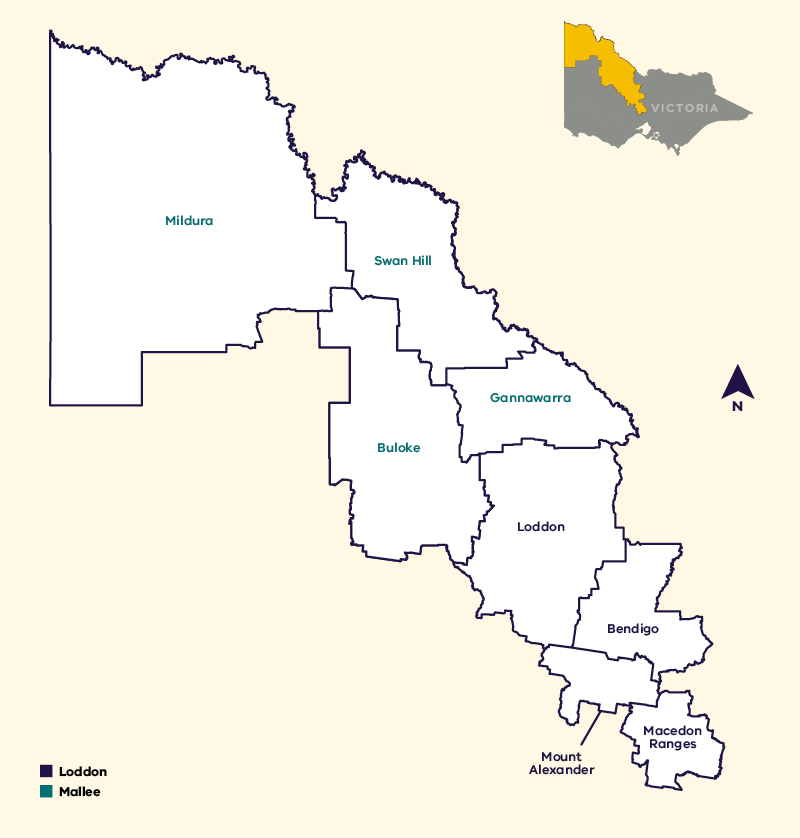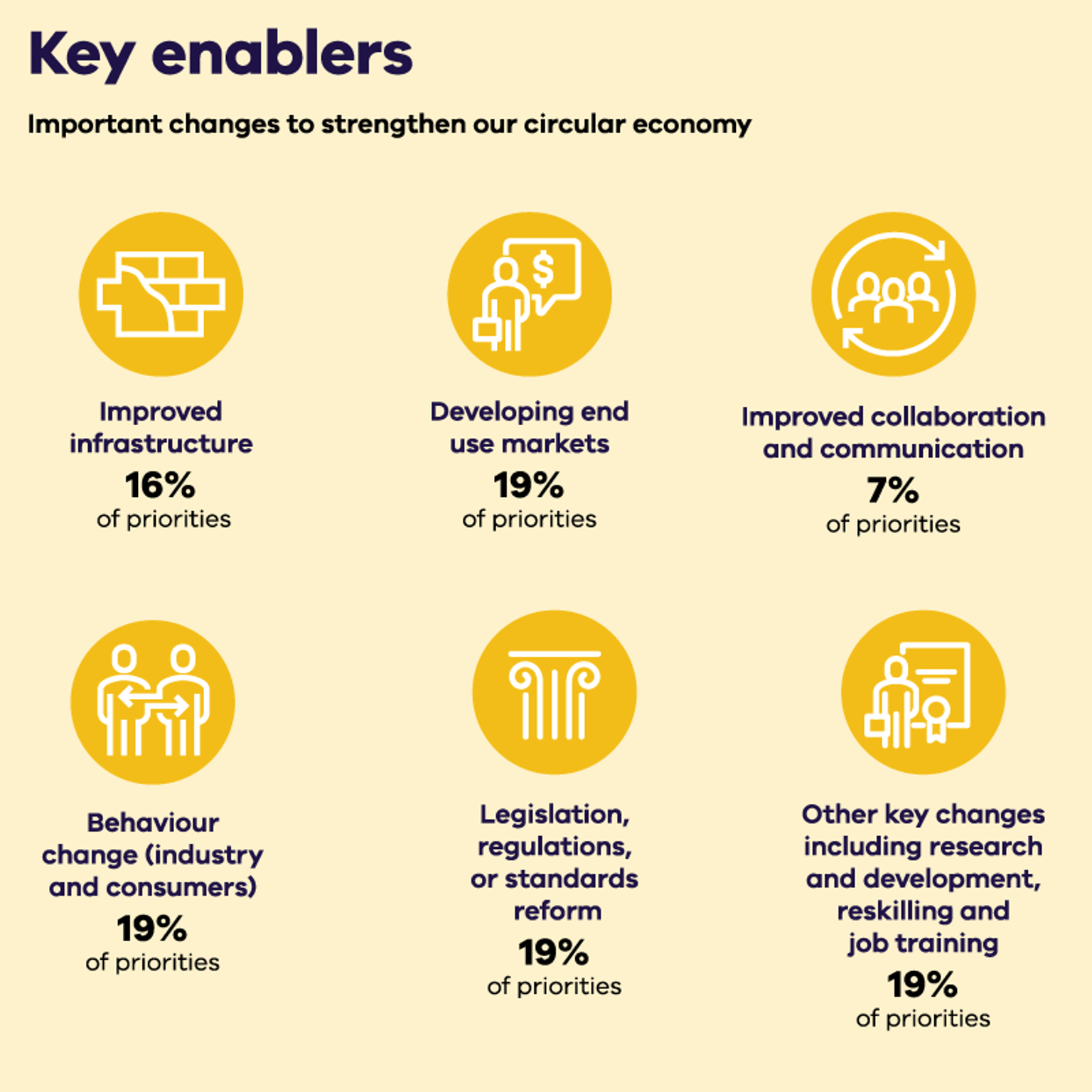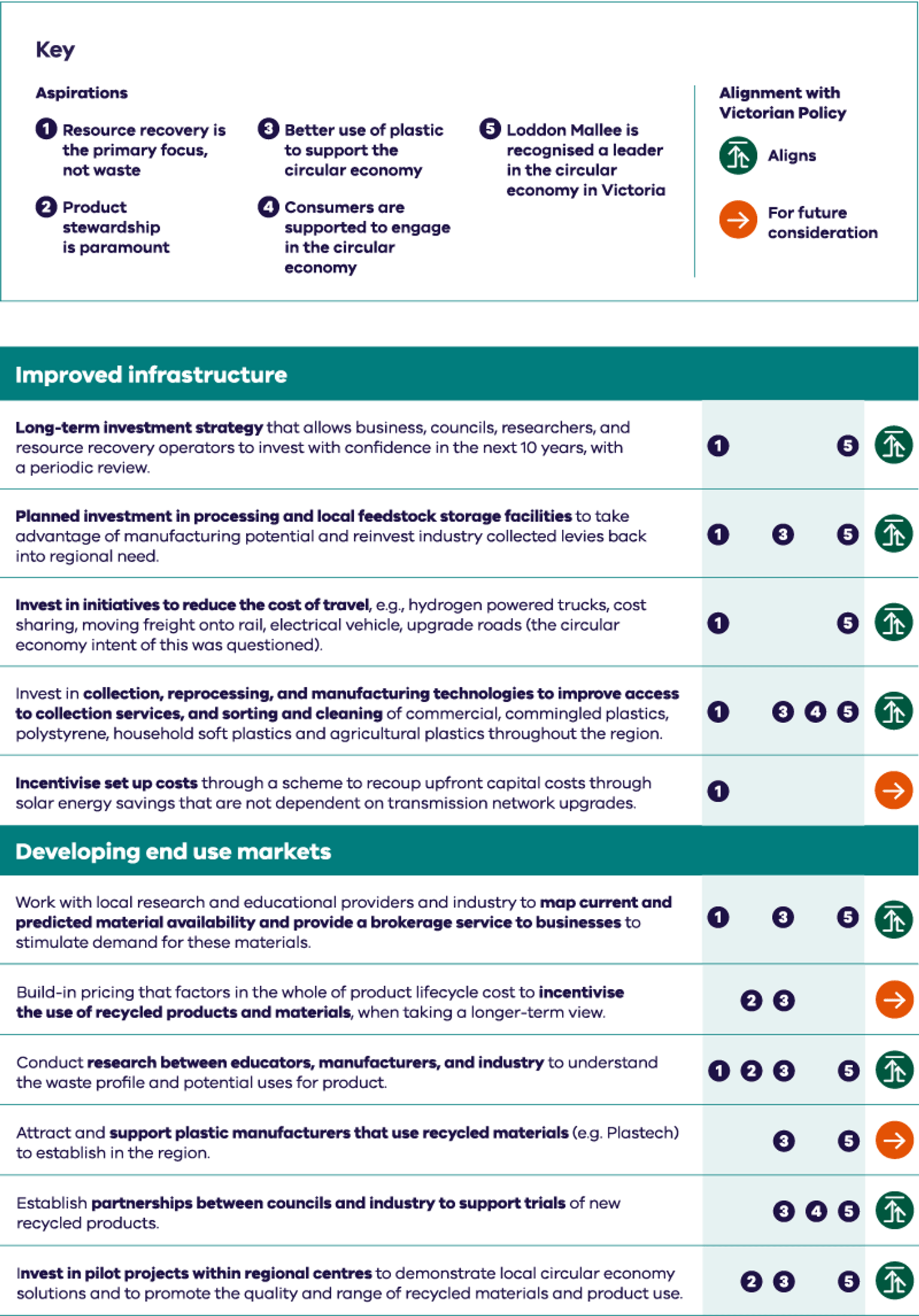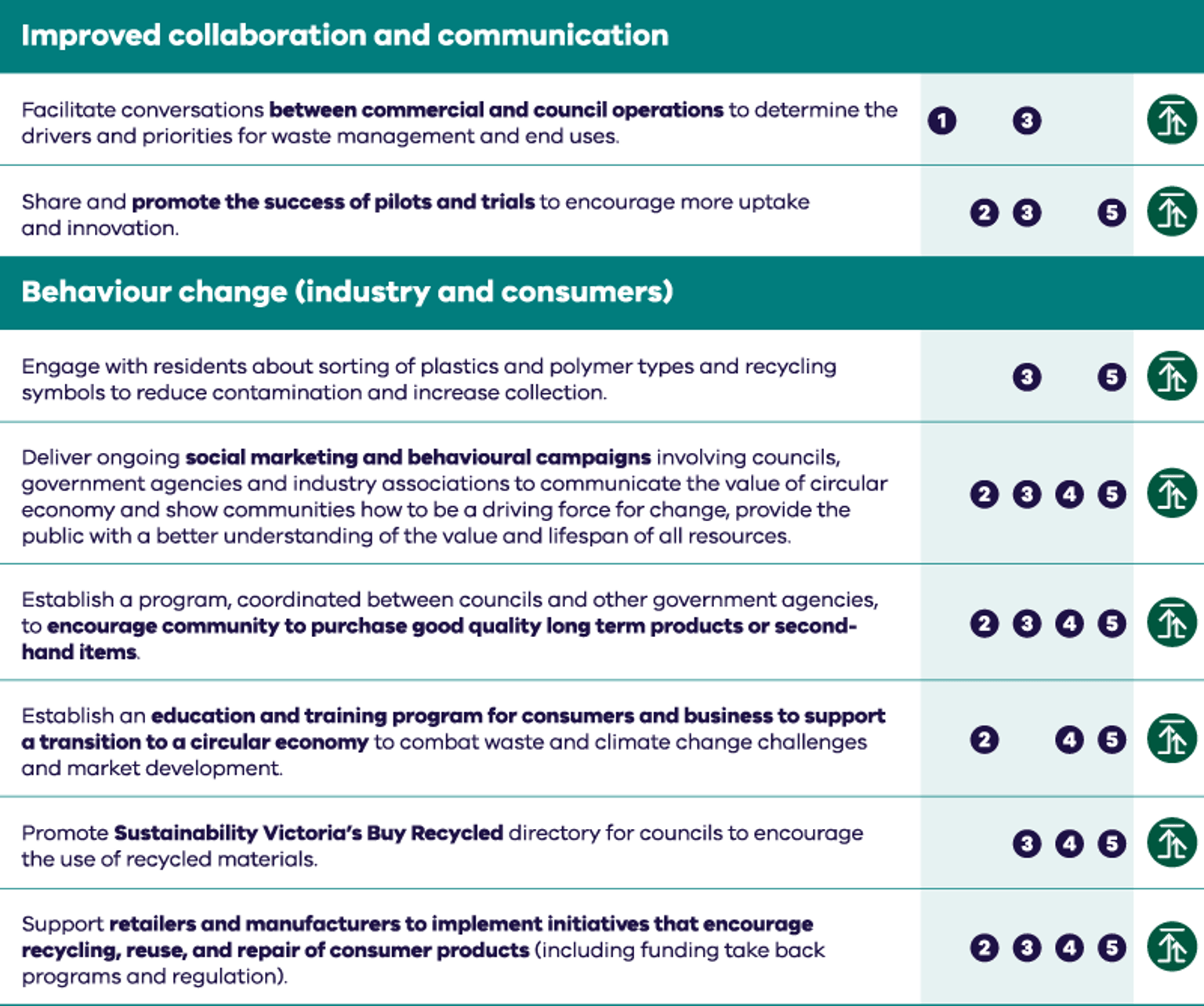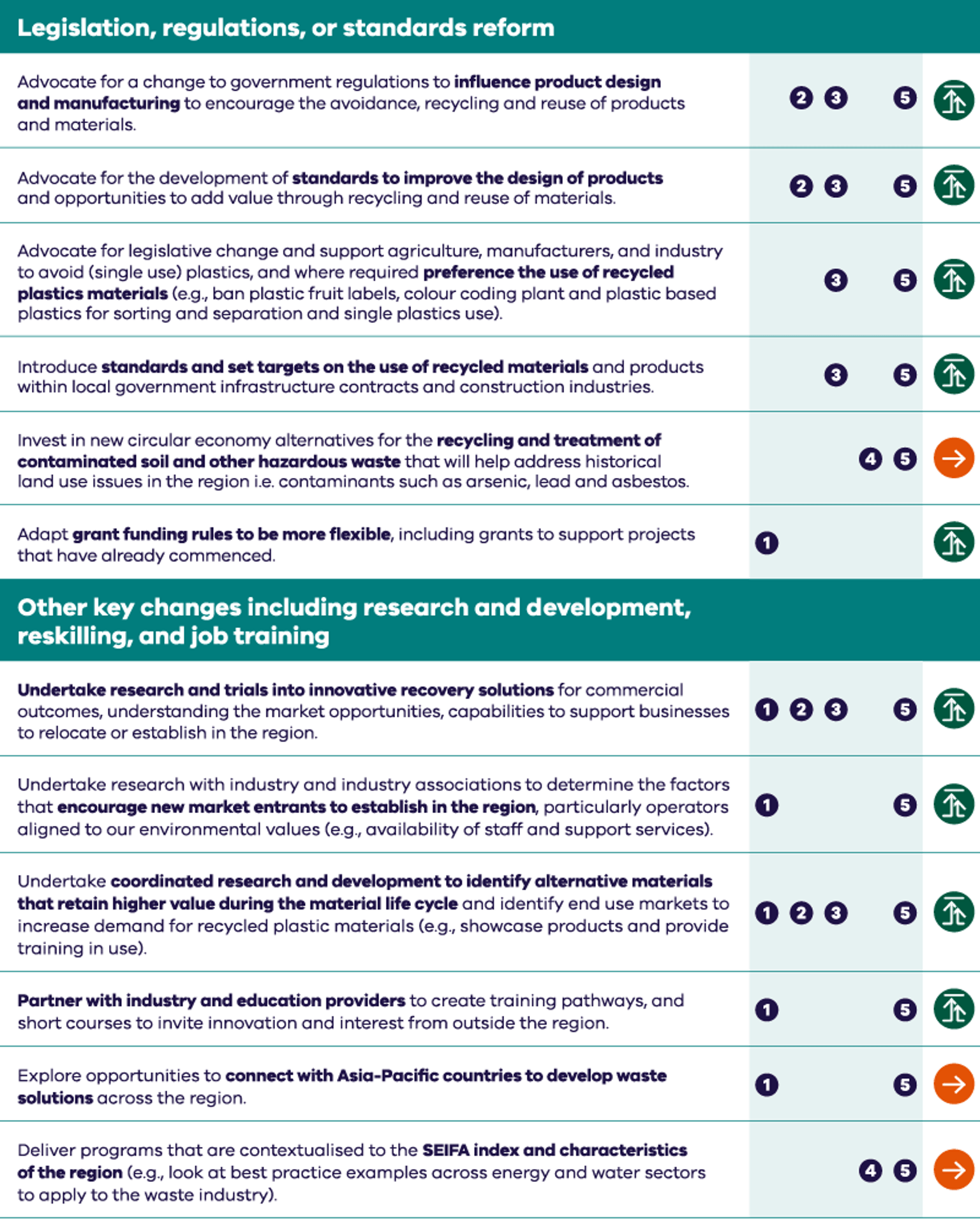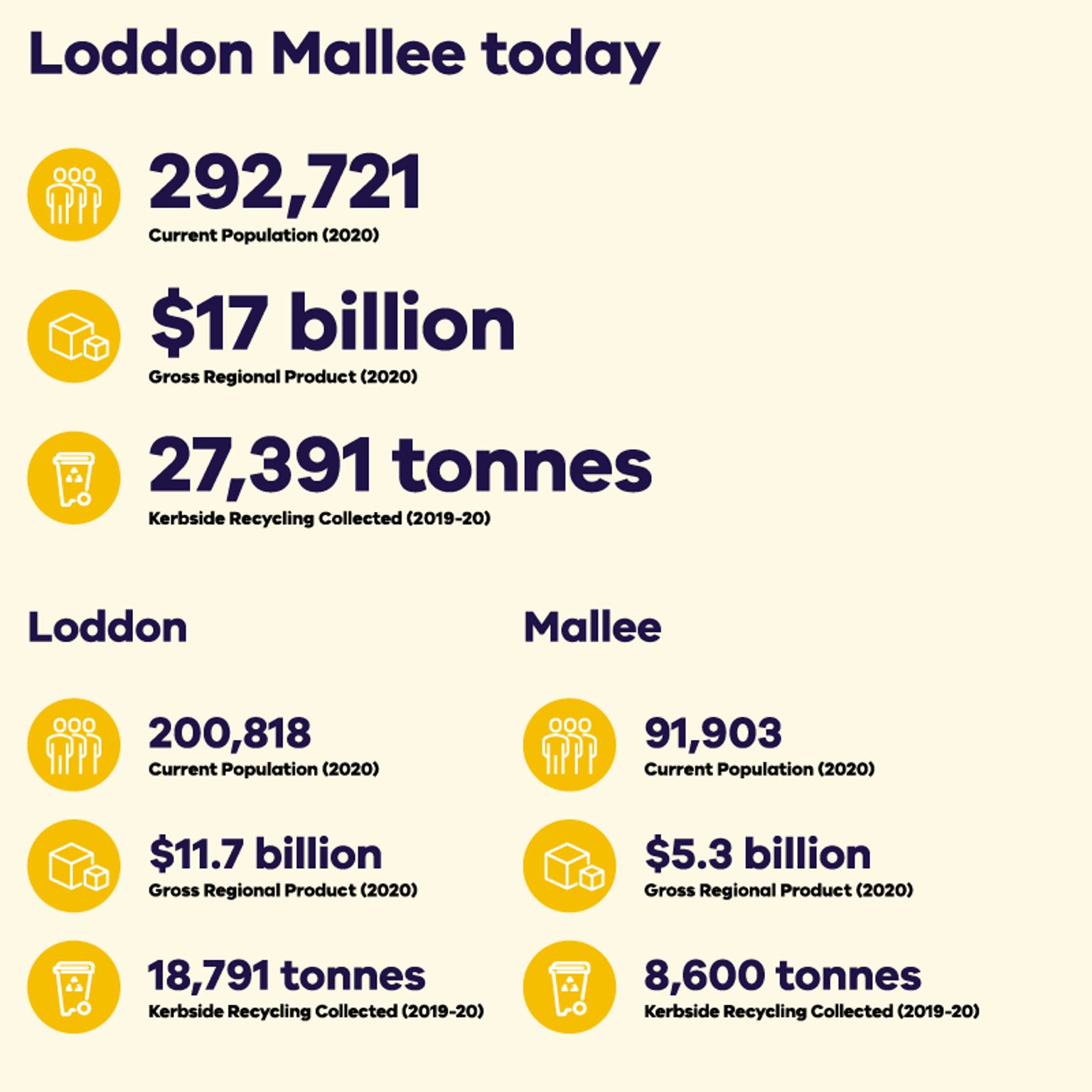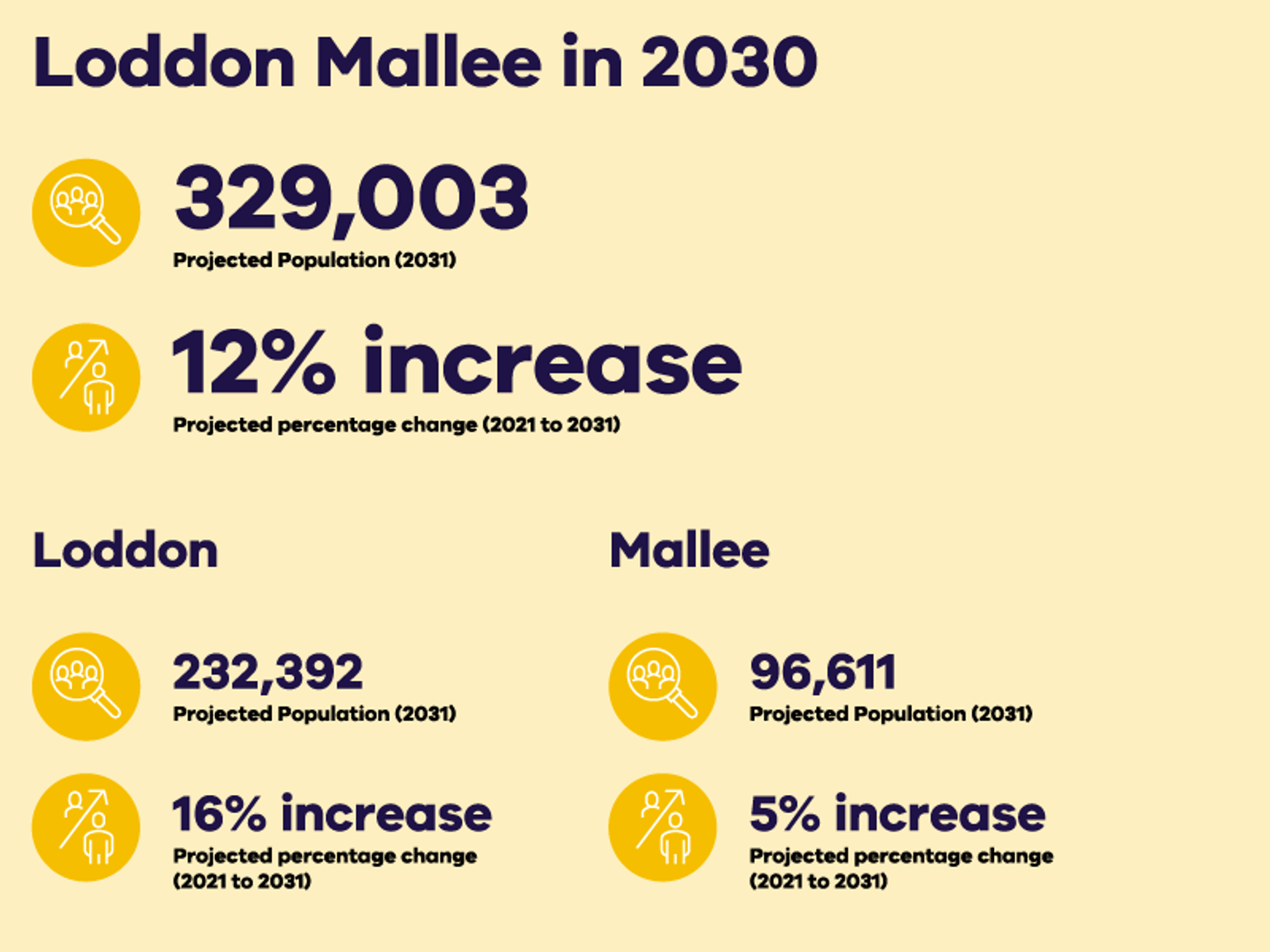The Loddon Mallee regional circular economy plan sets out the region's aspirations to 2030 for a sustainable and thriving circular economy.
Representatives from 52 organisations contributed to the plan, including:
- local government
- businesses and business associations
- manufacturers
- social enterprise
- the waste and resource recovery industry
- research and education institutions
- and the Victorian Government.
They participated in robust discussions and workshops facilitated by the Victorian Government designed to encourage strategic thinking about their region, where they are now, where they want to be by 2030, and how they can work together to get there.
Aspirations to 2030
Loddon Mallee’s five circular economy aspirations to 2030 are detailed below, along with six important changes, or ‘key enablers’, that have been identified to help realise these aspirations.
By 2030, in Loddon Mallee
1. Resource recovery is the primary focus, not waste
New entrants and existing resource recovery managers have transitioned from a waste to resource recovery focus.
2. Product stewardship is paramount
Products and materials are created within Loddon Mallee with an understanding of their lifecycle. Locally produced items are easy to repurpose or recycle, and retailers and manufacturers are accountable for the full product life.
3. Better use of plastic to support the circular economy
In the Loddon Mallee region, we actively avoid the use of plastic. Where it is used, we choose recycled plastics, or easily recycled materials to keep plastic materials in the recycling loop.
4. Consumers are supported to engage in the circular economy
In the Loddon Mallee region, consumers are equitably supported to avoid use where possible and maximise the reuse and recycling of products.
5. Loddon Mallee is recognised a leader in the circular economy in Victoria
We have a proud reputation for the design, manufacture and use of recycled materials and products for the construction, agricultural and health sectors.
Key enablers
Priorities to achieve our aspirations
Loddon Mallee has developed 31 priorities to achieve their circular economy aspirations to 2030. Each priority has been identified as contributing to one or more aspiration and has been grouped by Key Enablers. Many of the priorities align with current Victorian Government policy, whilst others will be for future consideration.
Loddon Mallee today
Loddon Mallee representatives developed the region's circular economy aspirations and priorities. The representatives brought a local understanding of the region’s strengths and challenges. They considered ‘where we are today’ as a region, before projecting forward to ‘where we want to be’ in 2030 and beyond.
The process identified the region's key strengths. These strengths will help the region work towards their 2030 aspirations.
The region covers a large geographical area. This includes the sub-regions of Loddon and Mallee.
The region has a broad mix of industries including horticulture, dairying, broad acre cropping, mineral sand and rare earth mining, renewable energy, and tourism sectors.
Strong transport network links the region to other regions in Victoria, as well as New South Wales and South Australia. This supports the movement of recycled materials to processing facilities and end markets.
Refer to Victoria's Regional Economic Development Strategies (REDS) for in-depth economic analysis.
Strengths
- Strong transport network links between Victoria, New South Wales and South Australia to move recyclables to processing facilities and products to end markets, predominantly in areas closer to peri-urban Melbourne.
- Innovation – investment and trials are already underway to increase recycling rates and manufacturing’s use of recycled content.
- Reducing complexity in recycling organics and access to appropriately cited land, to make it more attractive for farmer involvement.
- Education and training – existing local educators providing training in skills required by new processing and manufacturing industries, less so in rural and remote areas.
- Local circular economy projects to draw upon and promote, such as local biochar production where wood waste is converted for use in agriculture.
- Population – population growth will ensure the availability of recyclable materials and demand for products manufactured with recycled content.
- Natural assets – sufficient land availability to co-locate sorting, processing, and manufacturing precinct, with enough of a buffer from residential growth.
- Economic – the price parity of recycled material use is becoming more attractive.
Loddon Mallee in 2030
Loddon Mallee's representatives also considered the region’s challenges. They developed the region’s circular economy priorities to mitigate these challenges.
Loddon Mallee covers a large geographic area. Circular economy opportunities vary between rural and per-urban areas. It can cost more to access local processing facilities than transporting to larger facilities in Melbourne. Lack of resources can also be a barrier for some councils to be able to progress circular economy outcomes.
By 2030, the Loddon Mallee region forecast to be home to 329,003 people, increasing by 12% from 2021 to 2031. The Loddon sub region is forecast to grow faster than the Great South Coast, increasing by 16 percent compared to 5 percent.
Higher rates of waste and recyclable materials are likely where populations increase. This will increase demand for sorting, processing, and storage infrastructure. Increased material transport out of the region will place added pressure on regional roads.
Some areas that are not forecast to increase their populations may continue not to need household collection. This could present a challenge for local councils and industry aiming to divert materials from landfill.
Refer to Victoria's Regional Economic Development Strategies (REDS) for in-depth economic analysis.
Challenges
- Large geographic area where circular economy opportunities vary greatly between rural and peri-urban areas.
- Transports networks, while a strength in some regions remain a challenge in rural and remote areas.
- Traditional metrics to evaluate investment business cases for waste and recycling infrastructure don’t consider the other social, environmental, and economic benefits.
- Councils don’t have the resources, capability, and capacity to approach resource recovery through a circular economy lens.
- Current council procurement preferences discourage use of recycled materials and products.
- Grant funding is insufficient and/or not aligned to council budget time frames to be useful for many recycling projects and trials.
- Cost of accessing local processing facilities is, in some instances, greater than transporting to larger facilities in Melbourne.
- Low economies of scale of some waste streams and the high relative costs of small processing facilities reduce the cost effectiveness of recycling.
- Recycling costs are not factored into projects, products, and materials and this disproportional cost profile discourages investment and uptake.
- Limited demand and end markets for the high volume of recyclable material.
- Tension between avoidance and waste generation as a resource. More clarity needed on future avoidance plans to give commercial operators confidence.
- Seasonality of some significant waste streams affects feedstock supply.
Loddon Mallee regional circular economy plan
Engagement program summary report
For more information on the Engagement Program refer to the Regional circular economy plans engagement summary report.
Updated

